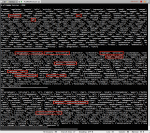The early finding that glucose-regulated UPR target genes are induced by treatment with reducing agents, which antagonize the formation of disulfide bonds, was made before the actual discovery of the UPR (Kim and Lee, 1987). Nowadays, disulfide-reducing agents such as dithiothreitol (DTT) are widely being used as rapid inducers of ER stress (DuRoseet al., 2006), and it has been shown that even an excess of the endogenous ER reductant GSH can activate the UPR by compromising oxidative protein folding (Kumar et al., 2011).The early finding that glucose-regulated UPR target genes are induced by treatment with reducing agents, which antagonize the formation of disulfide bonds, was made before the actual discovery of the UPR (Kim and Lee, 1987). Nowadays, disulfide-reducing agents such as dithiothreitol (DTT) are widely being used as rapid inducers of ER stress (DuRoseet al., 2006), and it has been shown that even an excess of the endogenous ER reductant GSH can activate the UPR by compromising oxidative protein folding (Kumar et al., 2011).

